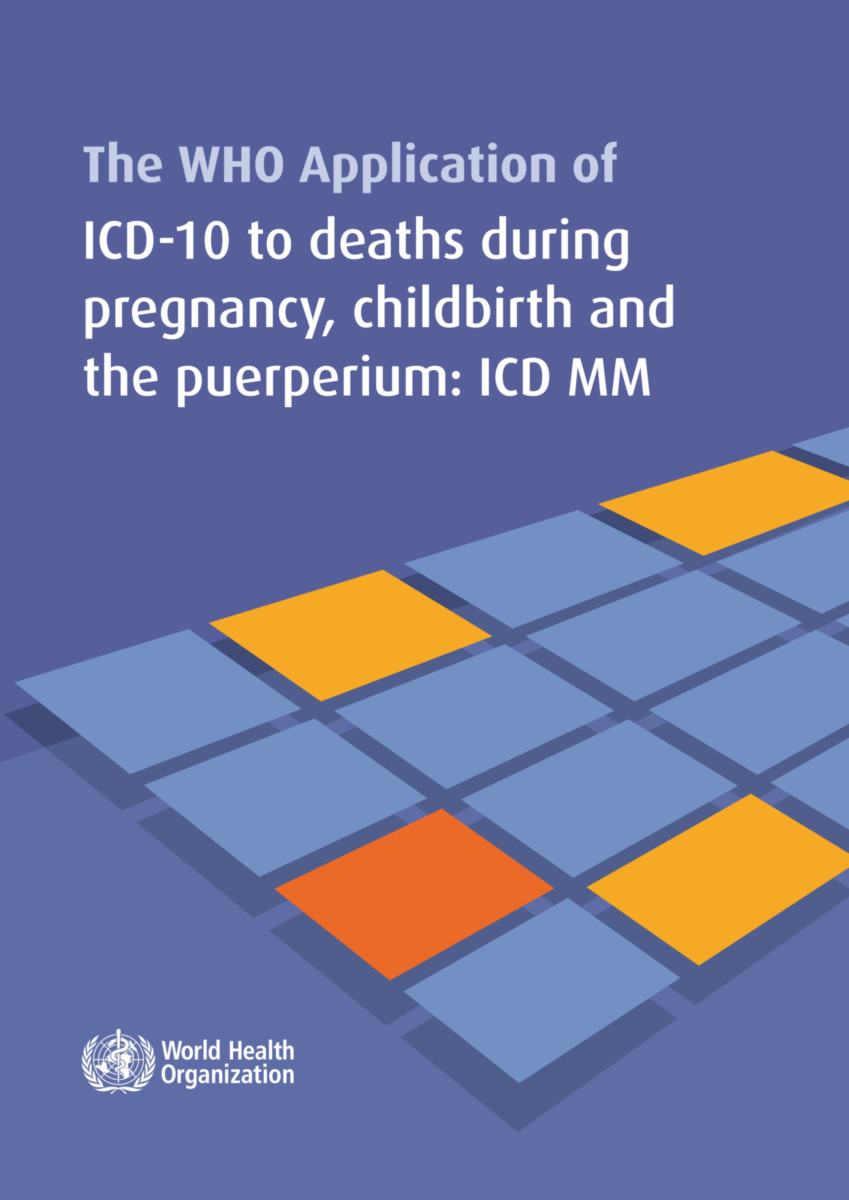WHO Application of ICD-10 to Deaths During Pregnancy, Childbirth and the Puerperium
ICD-Maternal Mortality
- Publisher
World Health Organization - Published
9th January 2013 - ISBN 9789241548458
- Language English
- Pages 75 pp.
- Size 6.875" x 9.75"
Reducing maternal mortality by 75% is the Millennium Development Goal 5a. To reach this goal, countries need an accurate picture of the causes and levels of maternal deaths. However, efforts to document the progress in decreasing maternal mortality must make adjustments for inconsistencies in country-reported maternal mortality. Completeness of maternal death reporting and accuracy of statements of causes of death need to be improved and may compromise the output resulting from subsequent standardized coding and classification according to the rules of the International Statistical Classification of Diseases (ICD).
The WHO Application of ICD-10 to Deaths During Pregnancy, Childbirth, and the Puerperium: ICD-Maternal Mortality (ICD-MM) is based upon the 10th revision of the ICD (ICD-10) and its coding rules. It is intended to facilitate the consistent collection, analysis and interpretation of information on maternal deaths. Improved reporting will also facilitate the coding of conditions. This document is primarily intended to assist health-care providers, those who complete death certification by clarifying the application of the ICD-10 and standardizing the identification of direct and indirect maternal deaths. Its principles should be applicable for categorizing deaths data collected through civil registration, surveys, hospital information systems, verbal autopsies, confidential enquiries and other special studies.
The accompanying appendices and tables:
* facilitate consistent reporting of the clinical conditions,
* identify conditions and codes which are unlikely causes of death but may have contributed to death,
* indicate which causes of death are counted as direct or indirect maternal deaths.
Ultimately, standardization of the cause of death attribution will improve:
* interpretation of data on maternal mortality,
* analysis on the causes of maternal death,
* allocation of resources and programs intended to address maternal mortality.
Applying ICD-MM will decrease errors in coding and improve cause of maternal death attribution. This will enhance usability and comparability of maternal mortality statistics generated from ICD data. It is recommended that countries adopt the ICD-MM, and statistical offices and academicians collect data according to the ICD-MM.
The guide should always be used in conjunction with the three volumes of ICD-10. The suggested code should be verified and possible additional information should be coded using the full ICD- 10, Volumes 1 and 3; rules for selection of underlying cause of death and certification of death apply in the way they are described in ICD-10 Volume 2.
World Health Organization
World Health Organization is a Specialized Agency of the United Nations, charged to act as the world's directing and coordinating authority on questions of human health. It is responsible for providing leadership on global health matters, shaping the health research agenda, setting norms and standards, articulating evidence-based policy options, providing technical support to countries, and monitoring and assessing health trends.


